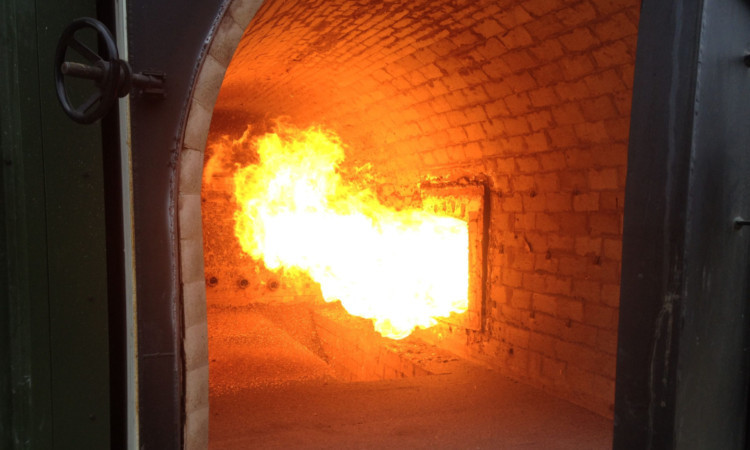When it came to designing a new grain-drying complex at Balbirnie Home Farms, Robert Balfour and his son Johnnie had some pretty strict criteria.
The previous set-up was designed when the annual harvest was 1,500 tonnes.
Now the farms, which stretch from Freuchie to beyond Markinch, produce between 5,000 and 6,000 tonnes each year.
“We did look at being members of a central store but didn’t think the figures worked out for us,” said Robert.
“The plan was to have our own store and dryer here at Pitillock and design the plant so that it would dry in a day what we could harvest in a day.”
A modern 35ft-cut combine such as the New Holland employed at Balbirnie can produce between 300 and 400 tonnes a day, so that implied a 30-tonne-per-hour drying capacity.
That in turn meant a huge bill if gas or oil was to be used as a fuel and it was here that the benefit of owning a mixed estate came to the fore. The Balfours have around 1,000 acres of forestry in various parcels around the farms.
“Timber has various values but the market price for chipwood can be as little as £2 per tonne, so we had a fuel source within our own resources,” said Robert.
“In a normal season we reckoned we would need 50,000 litres of oil to dry our grain. We calculated that this could be replaced with 180 to 200 tonnes of woodchip.
“Even in a wet season such as 2012 we would be unlikely to need more than 350 tonnes. My mother, who is a chartered forester, agreed that we could sustainably produce 500 tonnes of woodchip.”
Having decided on the fuel source it was a case of designing the plant and store.
A Perry tower dryer with a nominal capacity of 50 tonnes per hour on oil was chosen to make sure daily output would be high enough, even with air temperatures at the lowish 65-70C needed for seed barley, malting barley and milling oats.
Roger Horner from Lindores helped with the design, which incorporated large intake pits and a flat-floor store all under a single 49-metre clear span building.
After much studying, the biomass plant was sourced from Polish firm Graso.
Capable of providing a massive two megawatts through two furnaces,the system operates on an air-to-air principle.
A silo is topped up daily with woodchip and the material is then metred automatically into the furnaces.
“From there it is like a dragon breathing into a chamber,” said Johnnie.
“A powerful blast of air from a 100kw electric fan pushes the superheated air into the heat exchanger.
“It is basic Victorian engineering of the sort that Brunel would be completely at home with. The hot air passes through pipes not unlike those in a steam engine boiler. These transfer the heat to the air in the jacket, and this clean air is then sucked into the dryer to do its work.”
As a rather neat twist, the chaff from the dryer is fed back into the woodchip silo to be used as fuel.
The woodchip itself is kept in a nearby flat store.
It only needed one day’s hire of a 500-horsepower wood-chipper to fill the store with enough material for the harvest run.
The machine was easily capable of keeping up with a wagon and drag making the short run from the stockpiles of logs dotted around the estate.
Brunel may well have understood the basic engineering, but he might have struggled with the electronic controls which keep the operation synchronised. The sophisticated Perry control board had to be made compatible with the more basic panel supplied from Poland with the burner, but all seems to have gone well.
“The whole project cost around £800,000, including £100,000 for the Polish equipment,” said Robert.
“We didn’t go for the Renewable Heat Incentive because the income would have been very small on a seasonal operation like grain drying.
“We did, however, receive SRDP grant at 40% on £96,000 of the biomass element, and I am grateful to the Scottish Government for that. It tipped the balance for us in making the decision.”
